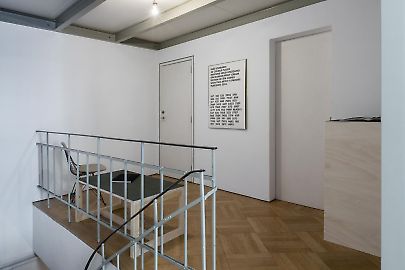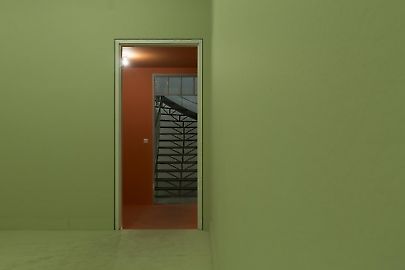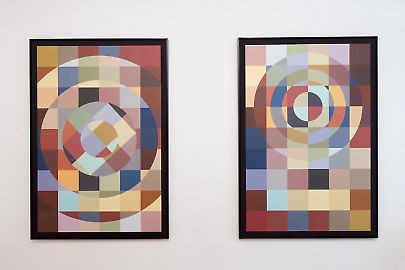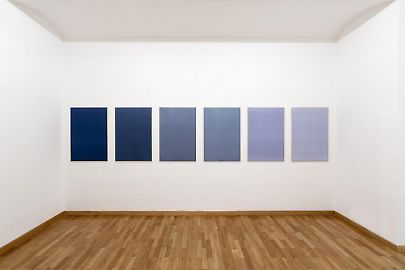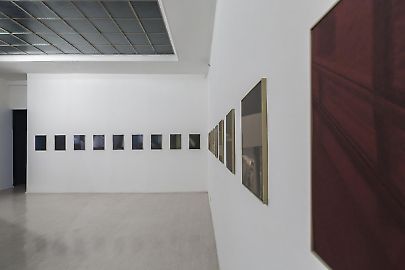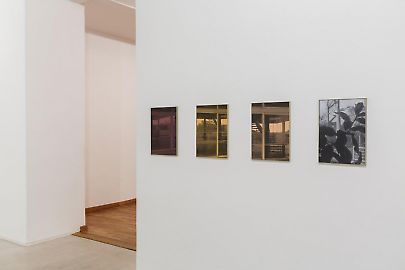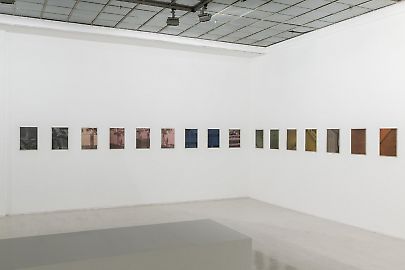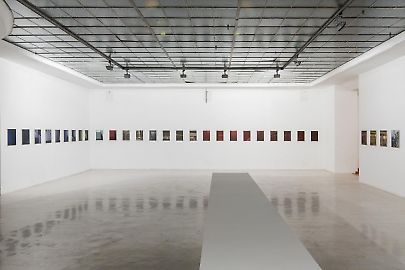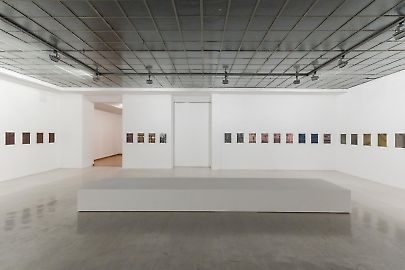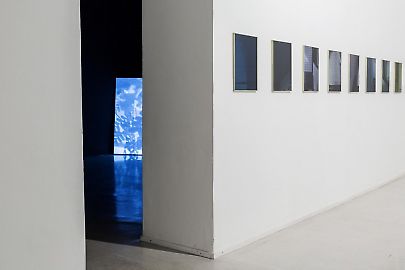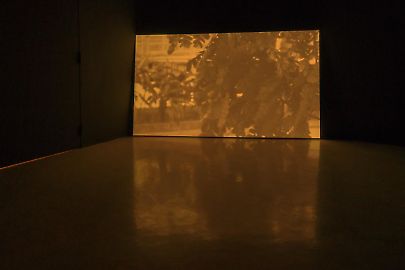Inés Lombardi -- transient stage
The exhibition Transient Stage by Brazilian artist Inés Lombardi plays with the symbolization of a wide-reaching, transient and ever-renewing concept of “now” – a presentness, which also includes the past, springing from it and yet always remaining inscrutable. The base material for Lombardi's current artistic exploration is provided by layers of color found in the residence of Olivo Gomes in São Paolo, brought to light through the archeological chromatic prospection of the Brazilian Agency of Historic Preservation. Variously nuanced color tones have been used to paint the interior and exterior of the residence since its erection in 1950, and they are preserved in multiple layers, most of which are no longer openly visible today. Lombardi investigates the minute displacements of color that have arisen through overpainting and the passage of time, capturing them using the internationally standardized Pantone Matching System. The 54 Pantone colors culled from the artist's stratigraphic prospection open a gaze into a past that also comprises the present and an as yet unknown future.
In the gallery's entry area, Lombardi draws attention to a wooden construction referencing a temporary presentation by Brazilian architect Lina Bo Bardi for the collection of the MASP. It displays two large-format montages, each of them consisting of 54 square fields. The first montage brings together monochromatic Pantone color panels in an arrangement that at points is interrupted by detail photos of the residence's interior and exterior. The second montage corresponds to the first, but in reverse: views of the house and garden dominate, with monochromatic surfaces interspersed at points. The resulting complementarity of the two works proposes a correspondence between colors and photographs, evoking multifarious and hybrid relationships between inside and outside, past and present, hidden and visible, architecture and nature.
On the lower level Lombardi continues to explore the idea of complementarity and the blending of contraries, here transposing her thoughts into three dimensions. The rooms, painted entirely in bright orange – a color that origins from the facade – and light green – stemming from the interior color palette of the house – become independent color objects, accenting the visitor's dual role as both subject and object of observation. The beholder's perception of color while moving through the space gives rise to an experience of these colors’ complementaries that transposes the interior with the exterior and vice versa. Inés Lombardi issues an open invitation to reflect on the concepts of beholder, work and space, and to consider the relationship between the individual and the world as an interplay of perception.
In the main room Lombardi presents 54 photo details of the Residência Olivo Gomes, each printed on a monochrome background provided by one of the Pantone colors. The images are concerned with the transparency of walls, windows and doors, both from inside looking out and from the garden looking into the house. The dichotomy of interior and exterior, transparency and opaqueness, foreground and background dissolves in the layering of image and color surface, letting boundaries flow. Hung all the way around the room, the images merge to form a whole, whose impression of coherence is strengthened by a subtle architectural intervention: the spaces usually left open by the gallery room's windows and freestanding wall have been closed. A massive block, conceived in accord with the room's architecture, serves as both a sculptural element and a bench. The beholder's movement along the series of prints gives rise not only to an appreciation of their almost painterly, sensuous character, but also to an impression akin to that of a film, with details joining frame by frame into a flow of color.
This sensation is paralleled in the gallery's last room, where Lombardi shows a video projection onto a surface leaned at an angle against the wall. A photo detail of the glass facade of the Residência Olivo Gomes taken from the garden is broken down into frames and creates the illusion of a continual slow movement downward that reappears again reversed as a reflection on the floor. The layering of colors over the moving image gives rise to an impression of gentle pulsation, whereby the images' chromatic variation makes tangible the fluidity inherent in time and space.
One gets the feeling that Inés Lombardi is endeavoring to make conscious a small segment of the unfathomable: just as our gaze through the glass of a closed window does not allow complete sensory perception of the reality behind it, presentness can only be captured incompletely.
Hence the title Transient Stage references a fundamental premise of Lombardi's work: the understanding of human perception as a process of perpetual change. The exhibition context is used as a temporary stage upon which the artist seeks to make this process visible.
Text: Julia Loeschl
Translation: Christopher Barber




